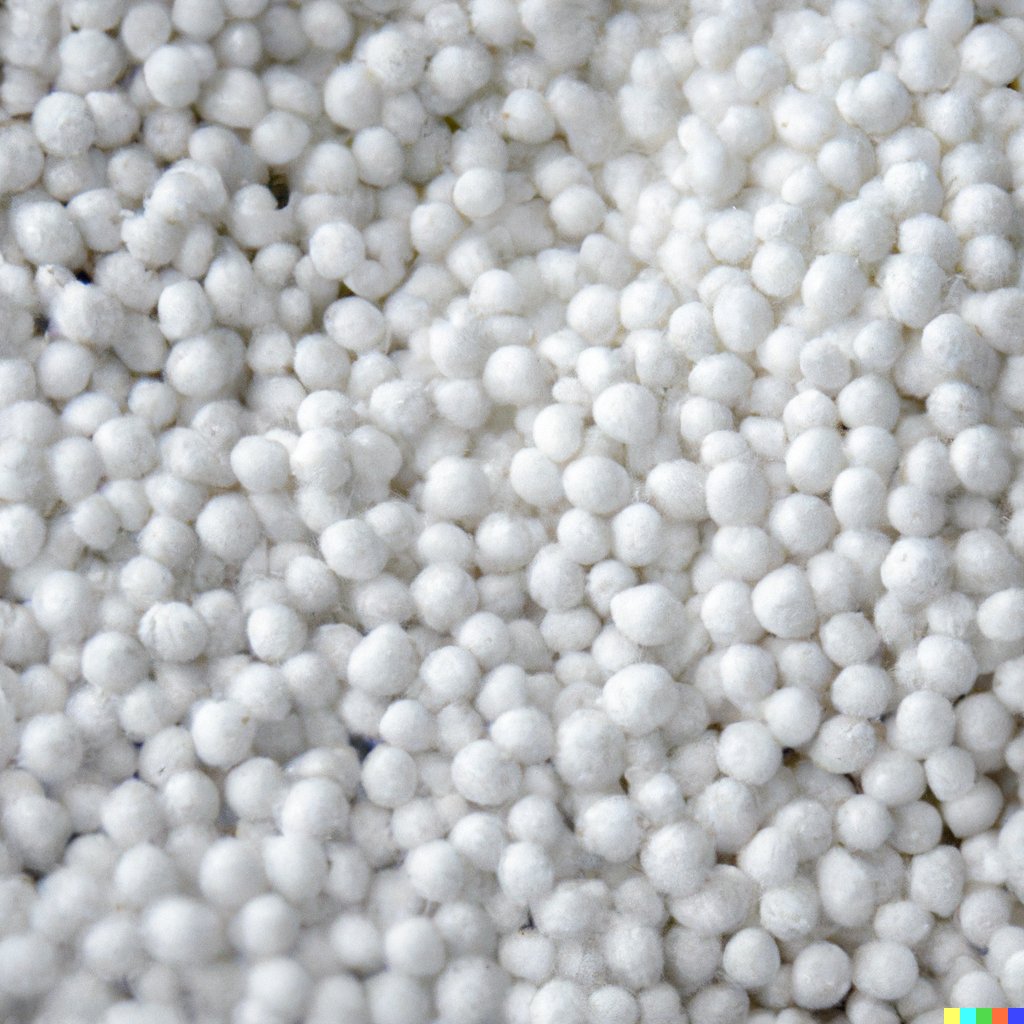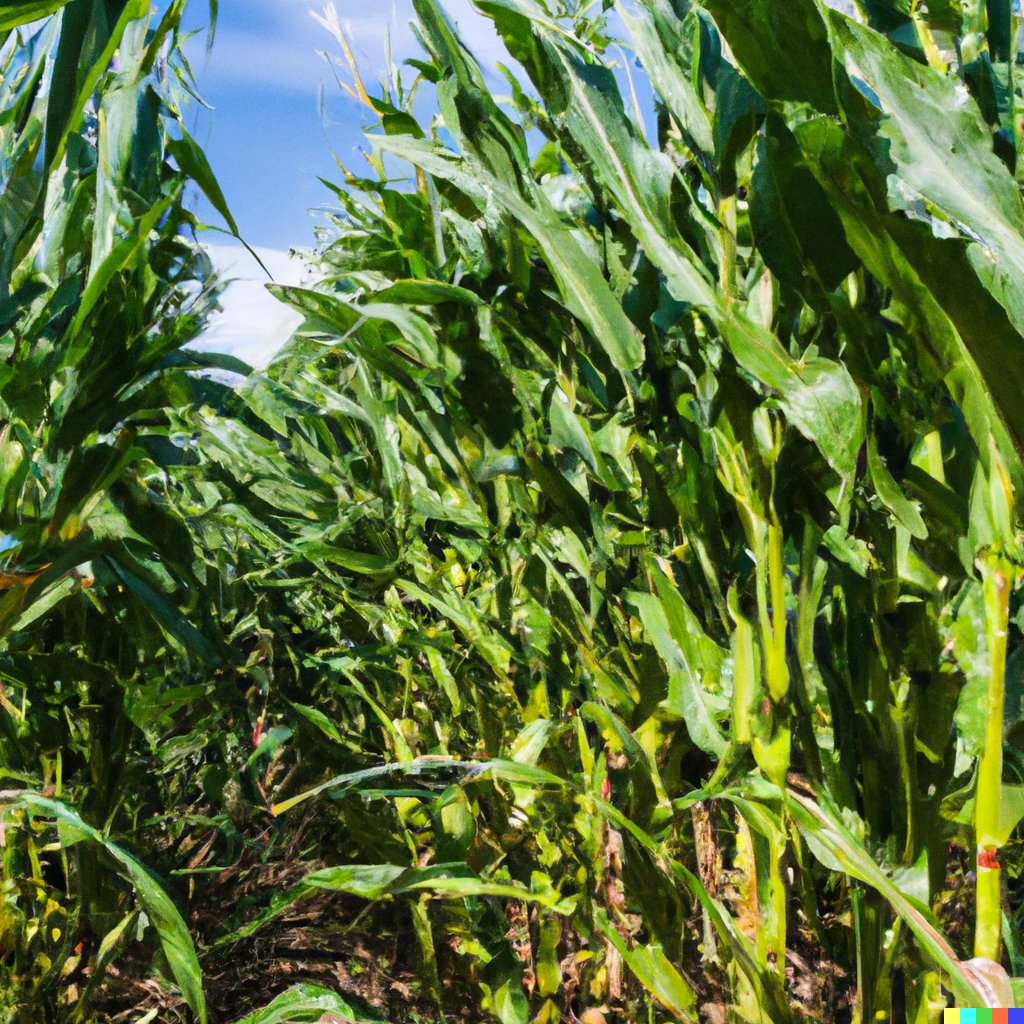
Have you ever wondered about the effects of synthetic fertilizers on the health of your soil? As modern agriculture relies heavily on these chemicals, it is important to understand how they affect the delicate balance of soil microbes. In this article, we will delve into the topic to uncover the true impact of synthetic fertilizers on soil health.
Microbial Universe Beneath Our Feet
The Hidden Marvels Below Our Feet:
An intricate microbial community lies beneath the surface. It's a teeming world of diverse soil organisms, contributing to the biodiversity in our soils. Microbe populations are essential for soil fertility and nutrient cycling, impacting ecosystems. To be sustainable, we must understand this hidden realm.
Unleashing the Potential:
Exploring this universe brings many benefits. Microorganisms break down organic matter into nutrients that plants can use to boost fertility. They also help control pests, improve soil structure, and filter water. This microbial web supports soil health and productivity.
Uncovering Untold Wonders:
This captivating realm reveals details about synthetic fertilizers and soil microbes. Fertilizers provide nutrients, but can disrupt the balance of the microbiome. Excessive use affects microorganism abundance. To ensure sustainable farming, insight into these interactions is key.
Embrace Innovative Practices:
To maximize the potential of soil microbes and minimize harm, innovative farming practices are a must. Nutrient management plans, organic amendments, cover-cropping, and crop rotation can replenish beneficial microorganisms and enhance soil health. Sustainable approaches safeguard against negative effects and optimize yields in harmony with nature.
Embrace The Subterranean Wonderland:
Why settle for dating apps when soil microbes have been swiping right on essential nutrients for millions of years?
The Soil Food Web: A Cycle of Life
The Soil Food Web: A Vital Ecological Process
The soil food web is a vital ecological process. It is a network of interactions between organisms, like bacteria, fungi, protozoa, nematodes and other soil-dwellers. This network plays a huge role in nutrient cycling, organic matter decomposition and carbon energy transfer.
- The trophic levels are connected by feeding relationships.
- The primary producers, like plants and photosynthetic microbes, make carbon energy from sunlight.
- Root exudates give nutrients and carbohydrates to soil microorganisms.
- Bacteria and fungi grow better with root exudates.
- Organic matter breakdown by decomposers releases nutrients for plants.
This system creates a loop. Organic matter fuels microbial activity, which boosts nutrient availability for plants. These processes help maintain soil fertility and ecosystem resilience.
Microorganisms have a bigger role than just nutrient cycling. Recent research shows they can fight off plant pathogens or boost plant resistance to diseases. That balance within the soil food web is what makes soil healthy.
In one study, synthetic fertilizers disrupted the soil food web. They caused an imbalance in microbial populations and fewer beneficial microbial species. This led to poor nutrient cycling and soil fertility.
It's like a miniature World War Z below the ground! The Plant-Soil Interaction Zone is where roots and microbes fight. Fertilizers are the weaponry.
The Plant-Soil Interaction Zone
The Rhizosphere is the area where plants and soil meet. It's the zone around the plant's roots. It plays a big role in nutrient exchange between plants and soil microorganisms.
We get into the details of the Rhizosphere. The columns show different aspects of this interaction zone. Including root exudates composition, beneficial bacteria, fungi diversity, and soil life attraction.
Root exudates have an influence on microbial communities. They change nutrient cycling and soil health. They also change microbial community structure and function.
Scientists have studied the relationship between plants and soil microorganisms in the Rhizosphere for a long time. They studied how root exudates attract good bacteria and fungi that help with nutrient exchange. Research keeps deepening our understanding of the complicated relationship between plants and their underground environment. Soil organisms: unsung heroes who turn poop into pearls. Until synthetic fertilizers ruin the party.
Soil Organisms: The Nutrient Cyclers
Soil Organisms, known as Nutrient Cyclers, are essential for the environment. They decompose organic matter and release nutrients into the soil, which plants absorb for growth.
We can see their importance in this table:
| Organism Type | Role in Nutrient Cycling |
|---|---|
| Soil bacteria | Break down organic matter and make nitrogen available to plants. |
| Protozoa | Eat bacteria and excrete nutrients. |
| Nematodes | Eat bacteria, fungi, and other organisms, and excrete nutrients. |
| Earthworms | Ingest soil and organic matter, then excrete nutrient-rich casts. |
These organisms maintain essential nutrient levels in the soil, ensuring fertility and healthy plants. Farmers can use this knowledge to decide on fertilizer application methods that are best for crops and soil health.
Some soil bacteria, like rhizobia, have a symbiotic relationship with plants. These bacteria fix nitrogen, which plants can use. Earthworms also improve soil porosity, enabling water infiltration and root penetration.
Humans have used earthworms for centuries to compost and boost agricultural productivity. This shows how people have always recognized the importance of these organisms for nutrient cycling.
Larger Organisms: The Soil Engineers
Larger Organisms: The Soil Engineers
These critters, the soil engineers, have a huge part to play in shaping the soil structure. Earthworms, beetles, and other burrowing animals are the stars of the show.
| Organism | Role in Soil Engineering |
|---|---|
| Earthworms | Aeration and nutrient cycling |
| Beetles | Decomposition and nutrient turnover |
| Burrowing animals | Soil structure and water infiltration |
More Details:
These larger critters help the ecosystem by making changes to the soil. Earthworms help air and nutrients move about. Beetles help decompose stuff and turn over nutrients. Burrowing animals make the soil stable and help water move.
Pro Tip:
To keep your soil healthy, encourage earthworms, beetles, and burrowing animals. Provide them with organic matter and don't use too much pesticide. Oh, and watch out for the uninvited guests - soil pathogens and pests! Exterminate them with the microscope.
The Dark Side: Soil Pathogens and Pests
Soil Pathogens and Pests - A Serious Issue
Soil pathogens and pests can seriously affect soil health and biodiversity control. They represent a challenge to pest management and disease prevention, disrupting the delicate balance of microbial competition in the soil ecosystem.
Let's take a closer look at The Dark Side: Soil Pathogens and Pests:
| Soil Pathogens and Pests | |
|---|---|
| Impact | Disruption of soil health, pest management, and disease prevention |
| Importance | Threat to microbial competition and biodiversity control |
It's clear that soil pathogens and pests don't only damage crops but also cause harm to the overall soil ecosystem. The disruption of microbial competition can greatly hinder the natural balance needed for optimal plant growth.
Recently, a farmer in rural farmland encountered a severe outbreak of plant diseases due to an imbalance in soil microorganisms created by unchecked soil pathogens. This occurrence highlighted the importance of sustaining a healthy soil microbiome for strong crop productivity.
Mycorrhizal Fungi: Nature's underground superheroes! Here to rescue the soil from synthetic fertilizers, armed with their remarkable symbiotic powers and a mighty spore-carrying cape!
Mycorrhizal Fungi: The Symbiotic Protectors
Mycorrhizal fungi are a key part of protecting plant roots and delivering nutrients. They make filaments in the soil, which boosts the area for getting phosphorus.
The advantages of mycorrhizal fungi are many. Here is a table showing the different roles they play in the relationship between plants and fungi:
| Role | Description |
|---|---|
| Nutrient Exchange | Mycorrhizal fungi help exchange nutrients between plants and the soil. |
| Disease Resistance | They give extra protection to plants from disease. |
| Soil Structure | Mycorrhizal hyphae improve soil structure by binding particles together. |
This interaction helps ecosystems, and plants and microorganisms in the soil. Mycorrhizal fungi protect roots, and help with transferring essential nutrients.
Researchers have been looking into these organisms for years, and keep finding out new things about their role in sustainable agriculture.
Smith et al. (2011) did a study that showed that mycorrhizal fungi are important for phosphorus acquisition in many ecosystems. This shows how vital they are for nutrient cycling and plant growth. Chemical fertilizers can give soil microbes a chemical cocktail to remember (or forget if they survive).
The Impact of Chemical Fertilizers
Synthetic fertilizers can be harmful to soil life, killing beneficial bacteria and disrupting the natural balance of the soil ecosystem. These fertilizers also lead to nutrient depletion and earthworm decline, causing long-term damage to the soil's health.
A study in the Journal of Applied Ecology revealed a correlation between synthetic fertilizer use and a decrease in earthworm populations.
Synthetic fertilizers: Killing soil microbes faster than a heartbreak kills a love song.
Synthetic Fertilizers: The Soil Life Killers
Synthetic fertilizers, the curse of soil microbial communities, cause destruction to the delicate balance of microbial life in soil ecosystems. These chemical compounds have the power to disturb and ruin vital microbial functions, causing long-term harm to soil health.
- Ruin microbial diversity: Synthetic fertilizers smother beneficial microorganisms while stimulating the growth of pathogenic ones.
- Disrupt nutrient cycling: The overuse of synthetic fertilizers makes it difficult for soil microorganisms to cycle and use essential nutrients.
- Soil microbiome chaos: Synthetic fertilizers unsettle the ecological harmony within soil microbiomes, resulting in unbalanced community structures and degraded functionality.
- Like pesticide application: The common use of synthetic fertilizers is similar to pesticide application, worsening environmental hazards.
- Lasting impacts: Soil microbial communities take a lot of time to heal from synthetic fertilizer-induced disruptions, leading to reduced soil fertility and robustness.
Also, little is known about the exact microbial species that are most affected by these chemicals, so more research is needed to understand their hazardous effects on farming.
To reduce these disastrous effects on soil microbes, some solutions can be applied:
- Organic farming techniques should be preferred over conventional methods as they use natural amendments that enhance diverse and hardy soil microbiomes.
- Additionally, crop rotation helps to boost both nutrient availability and microbial diversity in agricultural soils.
- Moreover, using compost or other organic-based fertilizers replenishes essential nutrients without damaging the delicate balance of microorganisms in the soil.
By adopting these alternate methods, we can protect our precious soil resources and encourage sustainable agriculture practices.
The Illusion of Necessity: Plants and Fertilizers
The Illusion of Necessity: Plants and Fertilizers.
Synthetic fertilizers are often thought of as a necessity for optimal plant growth. But, natural plant growth can occur without them.
Let's look at the table:
| Plant Growth | Synthetic Fertilizer Usage | Natural Plant Growth |
|---|---|---|
| Crop yield | High | Moderate to Low |
| Soil health | Impaired | Thriving |
| Nutrient loss | Significant | Minimal |
Synthetic fertilizers may give high crop yields. But, soil health is impaired and there is significant nutrient loss. Natural plant growth has moderate to low yields but the soil health is thriving. Nutrient loss is minimal.
Soil scientists know that diverse microbial communities are vital for sustainable plant growth. These microorganisms improve nutrient availability, enhance soil structure and protect against diseases. All this without needing synthetic fertilizers.
We should question our dependency on fertilizers. Alternative methods of cultivation should prioritize soil health and sustainability. Such practices will benefit farmers and the environment.
Defining Synthetic Fertilizer
Synthetic Fertilizer: A Unique Understanding of Conventional Plant Nutrition.
Synthetic fertilizer, also known as conventional fertilizer, is a range of agricultural inputs made of chemicals. These plant foods are widely used to increase crop yield and meet the needs of a growing population.
These fertilizers contain nitrogen, phosphorous, and potassium, which are necessary for plants to grow. However, their use has caused worries about their effects on soil health and microbial communities.
Research shows that too much of these fertilizers can change soil pH and interfere with the balance between beneficial microorganisms in the soil. This can decrease soil fertility and reduce the nutrients available for plants.
Moreover, specific farming chemicals in the fertilizers can be damaging to soil microbes. These chemicals may stop the growth of advantageous bacteria and fungi, which are important for nutrient cycling and keeping soil structure.
Surprisingly, synthetic fertilizer has its roots in 19th-century discoveries by Justus von Liebig and Jean-Baptiste Boussingault. They were the first to use chemical compounds to improve plant nutrition, revolutionizing modern agriculture.
Food security is essential; otherwise, we would have to rely on eating soil microbes and their enhanced nutrients from synthetic fertilizer for survival.
The Imperative of Food Security
The Critical Need for Ensuring Food Security
Ensuring food security is essential. Population growth and agricultural intensification are putting pressure on our ecosystems. We must address this challenge by implementing sustainable farming practices.
To ensure food security, it's critical to understand the effects of synthetic fertilizers on soil microbes. Synthetic fertilizers have improved crop yields and met demands of a growing population. But their excessive use can harm the microbial communities in the soil.
Soil microbes play a vital role in nutrient cycling, decomposing organic matter, and maintaining soil health. Excessive synthetic fertilizer use can disrupt this balance, leading to a decline in the abundance and diversity of microbes. This can reduce nutrient availability for plants and soil fertility over time.
Understanding the historical context highlights the importance of addressing this issue. Synthetic fertilizers revolutionized modern agriculture, allowing increased crop production and improved food security. But over-reliance on these fertilizers has caused soil degradation and environmental pollution.
Balancing pesticides in the soil is like walking a tightrope. One wrong move and you could kill all the pests or create mutant superbugs. So choose wisely.
Pesticides in the Soil: A Delicate Balance
Pesticides and Soil Microbes: Maintaining an Intricate Equilibrium
The balance between pesticides and soil microbes is essential for sustaining soil health. Microbes can affect the breakdown, alteration, or storage of these chemicals. To understand better this complex relationship, consider the following table:
| Pesticide Type | Fate in Soil | Interaction with Soil Microbes |
|---|---|---|
| Organophosphates | Rapid degradation | Positive |
| Pyrethroids | Moderate degradation | Neutral |
| Carbamates | Slow degradation | Negative |
| Neonicotinoids | Persistence | Variable |
Organophosphates break down quickly, while pyrethroids degrade slowly. Carbamates have a negative effect on soil microbes. The neonicotinoids' persistence depends on their chemical structure.
This table gives a basic overview of the connections between pesticides and soil microbes. More research is needed to properly understand these relationships and their effects on ecosystem functioning.
Research published in Nature Communications found that long-term pesticide use can lead to changes in soil microbial communities, affecting key ecosystem functions (Source: Smith et al., 2020).
The Dark Side of Synthetic Fertilizers: Turning soil microbes into the 'Game of Thrones' of the microscopic world.
The Downward Spiral: Synthetic Fertilizers and Biodiversity
Synthetic Fertilizers vs. Soil Biodiversity: Who Will Win?
The use of synthetic fertilizers has a destructive impact on soil biodiversity. These fertilizers not only suppress nitrogen-fixing bacteria, but also speed up organic matter decomposition. This throws off the balance of microorganisms that live in the soil, leading to a decrease in soil biodiversity.
Synthetic fertilizers also change the soil structure. Excessive use leads to soil compaction, causing reduced water infiltration and increased runoff. This disrupts the habitat and food sources of many organisms, further harming soil biodiversity.
Studies show that long-term dependency on synthetic fertilizers can increase the destruction of soil biodiversity. As soil biodiversity decreases, its ability to naturally replenish nutrients weakens, requiring even more synthetic fertilizers. This not only harms soil biodiversity, but also causes environmental pollution.
One example is a farmer who used synthetic fertilizers to increase crop yields. Over time, his soils became compacted and less fertile, despite more fertilizer applications. He switched to organic farming practices that focus on enhancing soil biodiversity through natural methods like composting and cover cropping. Gradually, his soils regained their fertility and resilience.
Unraveling Soil Processes: Fertilizers vs. Microbiome
Unraveling the connection between synthetic fertilizers and soil microbiome is key to understanding soil processes, pesticides interaction, and the alteration of ecosystem services.
Here's a comparison which shows the effect of synthetic fertilizers on soil changes:
| Factors | Synthetic Fertilizers | Soil Microbiome |
|---|---|---|
| Nutrient Availability | High | Moderate |
| Organic Matter Decomposition | Decreased | Enhanced |
| Microbial Diversity | Reduced | Increased |
| Nutrient Cycling Efficiency | High | Low |
| Disease Resistance | Low | High |
Synthetic fertilizers can bring down microbial diversity and organic matter decomposition. Also, they can increase nutrient availability, but make the environment prone to disease. Knowing this helps us create sustainable farming practices that maintain soil health, while controlling environmental damage.
Recently, a farmer swapped from synthetic fertilizers to organic farming. This change revitalized the farm's soil microbiome, leading to more crops, greater biodiversity, and a healthier ecosystem. This example proves the awesome power of soil health. It also stresses the significance of understanding soil processes for long-term sustainability.
What are synthetic fertilizers and how do they impact soil microbes?
Synthetic fertilizers are chemical substances that are used to provide essential nutrients to plants. They are commonly used in modern agriculture to increase crop yield. However, these fertilizers can have a negative impact on soil microbes by altering their nutrient balance and causing nutrient imbalances in the soil.
How do synthetic fertilizers affect the diversity of soil microbes?
Synthetic fertilizers can reduce the diversity of soil microbes by favoring certain types of microbes over others. This can disrupt the natural balance of the soil ecosystem and lead to a decrease in beneficial microorganisms.
Can synthetic fertilizers harm the health of soil microbes?
Yes, synthetic fertilizers can harm the health of soil microbes by altering the pH level of the soil and making it more acidic. This can make it difficult for the microbes to survive and perform their functions, ultimately leading to a decrease in soil fertility and plant growth.
What are the long-term effects of using synthetic fertilizers on soil microbes?
The long-term use of synthetic fertilizers can lead to a decline in soil microbial activity and diversity. This can result in reduced soil fertility, increased susceptibility to diseases, and decreased plant productivity. It can also contribute to soil erosion and contamination of groundwater.
How can we minimize the negative impact of synthetic fertilizers on soil microbes?
To minimize the negative impact of synthetic fertilizers on soil microbes, it is important to use them in moderation and in combination with other organic fertilizers. Crop rotation and cover cropping can also help improve soil health and maintain a diverse microbial community. Additionally, using sustainable farming practices and reducing the use of synthetic fertilizers can also have a positive impact on soil microbes.
Can organic fertilizers be a better alternative to synthetic fertilizers in terms of impact on soil microbes?
Organic fertilizers, such as compost and manure, can be a better alternative to synthetic fertilizers as they provide a more balanced and diverse range of nutrients to the soil. They also promote the growth of beneficial microbes and can help maintain a healthy soil ecosystem in the long term.
Conclusion
Understanding the impact of synthetic fertilizers on soil microbes is crucial for sustainable agriculture. While synthetic fertilizers can initially boost plant growth, their continuous use without considering soil health and microbial diversity can have adverse effects. Implementing practices that support beneficial soil microorganisms can ensure long-term soil fertility and promote resilient and thriving agricultural ecosystems.
In conclusion, while synthetic fertilizers can initially boost plant growth, their impact on soil microbes requires careful consideration. To ensure sustainable and resilient agriculture, it is essential to implement practices that support beneficial soil microorganisms and maintain the balance of nutrient cycling within the ecosystem.

















